The Milky Way has always captured the interest of humans. A simple glance at the night sky reveals a stunning, translucent river of milky-silver, adorned with countless distant stars. Thanks to the advancements in technology, scientists have made numerous fascinating discoveries about our galaxy over the past century, far surpassing the cumulative knowledge of all previous generations. However, there is still an abundance of mysteries waiting to be unraveled. Even with the aid of state-of-the-art telescopes at the disposal of modern astronomers, the depths of our galaxy remain unexplored.

A small portion of the Milky Way is visible to us.
The Milky Way is a spiral galaxy that spans a diameter of approximately 200,000 light-years. Its structure resembles that of a convex disk with a central bulge, giving it a saucer or hat-like shape. When observed in the night sky, it appears as a wide band due to its flattened disk shape. The luminosity of the Milky Way is attributed to its abundance of stars, star clusters, dust nebulae, and other celestial objects.
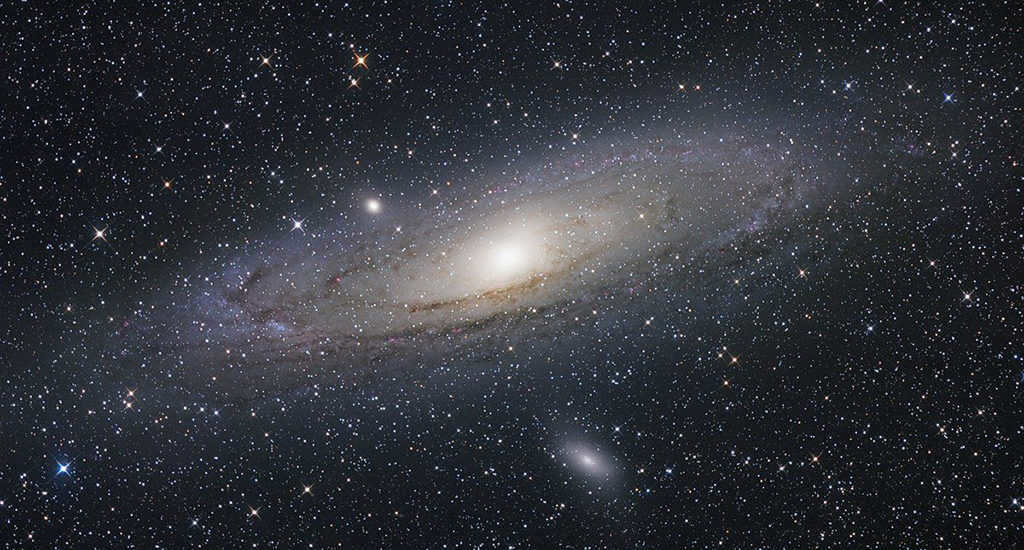
From a visual perspective, we are only able to observe a fraction of the vastness of the galactic space, limiting our view to a mere 0.0000025% of the total number of stars.
The name of our galaxy varies across different languages
One interesting fact about the galaxy is that the term “Milky Way” is predominantly used in Western countries, while in other regions, it may sound unfamiliar or strange.
This name originated in ancient Greece and has a fascinating mythological story behind it. According to legend, Zeus, the king of the gods, wanted to grant his son Hercules eternal life. To achieve this, he placed Hercules in bed next to his wife Hera while she was asleep. The plan was for Hercules to drink the divine milk from Hera’s breast, which would grant him immortality. However, when Hera woke up and saw the unfamiliar child, she pushed him away. As a result, the milk from her breasts splashed into the night sky, creating the beautiful formation known as the Milky Way.
In other cultures, the name of our galaxy is associated with different legends that do not involve milk. For instance, in certain Eastern societies, the name often contains the word “straw.” Let’s take a look at an example:
- Armenians refer to the Milky Way as “The Way of the Straw” or “The Way of the Straw Stealer.” This name stems from an ancient tale about Vahagn, the god of fire, who stole straw from the Assyrian king to provide warmth for his people.
- The Arabs are known as “The Way of Hay Traders” and are closely associated with the caravan routes.
- The Chechen people have been referred to as “The Way of Scattered Straw,” possibly derived from the ancient Armenians.
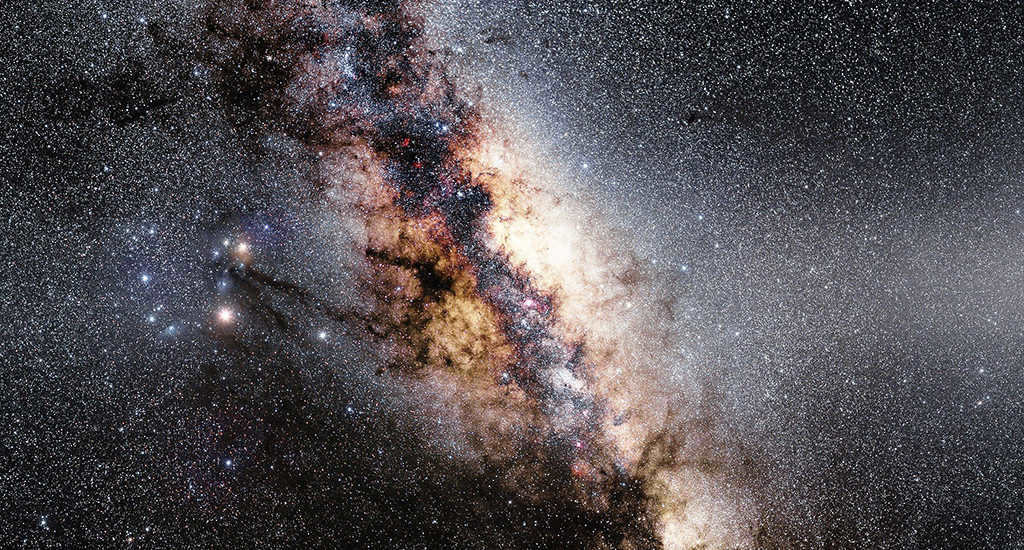
The Galaxy is known by different names in various East Asian languages such as Chinese, Korean, and Vietnamese. In these languages, it is referred to as the “Silver River”. In Norwegian and Icelandic languages, it is literally translated as the “Winter Way”. In Estonian, it is called the “Bird’s Way”. In Sanskrit, it is known as “Mandakini”, which translates to “calm” or “unhurried”. Soviet astronomers commonly referred to it as “our Galaxy” or “the Milky Way system”.
Studying the vastness of the galactic space is an immensely challenging task
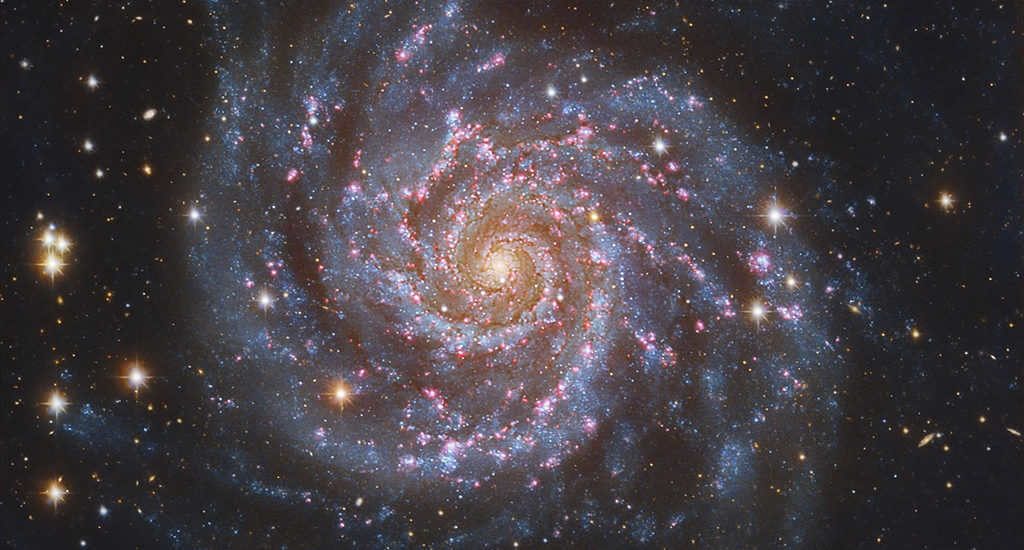
Due to limitations in current technology, it is not yet possible to capture a comprehensive image of the Milky Way from an external perspective. All publicly available images or photographs are either artistic renderings or snapshots of similar galaxies.
The Milky Way is home to over 200 billion stars
Estimating the total number of stars in our Galaxy is a subject of continuous discussion within the scientific community. The intricacies of space exploration make it challenging to accurately determine the exact count of celestial bodies. Additionally, the presence of vast quantities of gas and dust makes the formation of new objects a constant occurrence, further complicating the calculation.

According to recent calculations, the Milky Way is estimated to contain between 200 and 400 billion stars. This means that there could be anywhere from 800 billion to 3 trillion planets orbiting around these stars. As technology and techniques for studying space continue to advance, the accuracy of these numbers is constantly being refined.
One of the intriguing aspects of the Galaxy is that only 10% of its total volume is composed of visible components such as space dust, gas, stars, planets, asteroids, and other objects. The remaining majority is made up of a theoretical form of matter that lacks electromagnetic radiation and does not interact with it. As a result, conventional methods are ineffective in studying dark matter. Nevertheless, its existence has been confirmed through numerous observations of cosmic structures and their gravitational interactions. Similar to black holes, scientists can examine dark matter by observing its influence on surrounding objects.
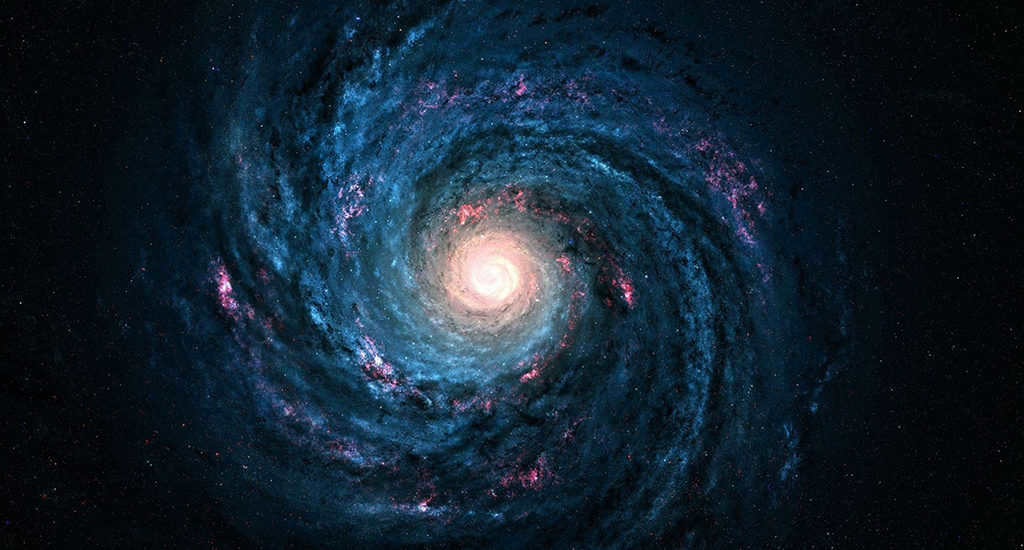
The Galaxy’s Center Contains a Supermassive Black Hole
Sagittarius A*, situated at the core of the Galaxy approximately 25,000 light years away from the Sun, is a compact radio source. Scientists believe it to be a supermassive black hole encompassed by a luminous gas cloud. Researchers at the Max Planck Institute have observed this phenomenon and, after over a decade of data collection and analysis, have determined that the object has a mass of approximately 4.3 million times that of the Sun within a radius of no more than 6.25 light hours. These findings strongly indicate that Sagittarius A* is indeed a black hole.
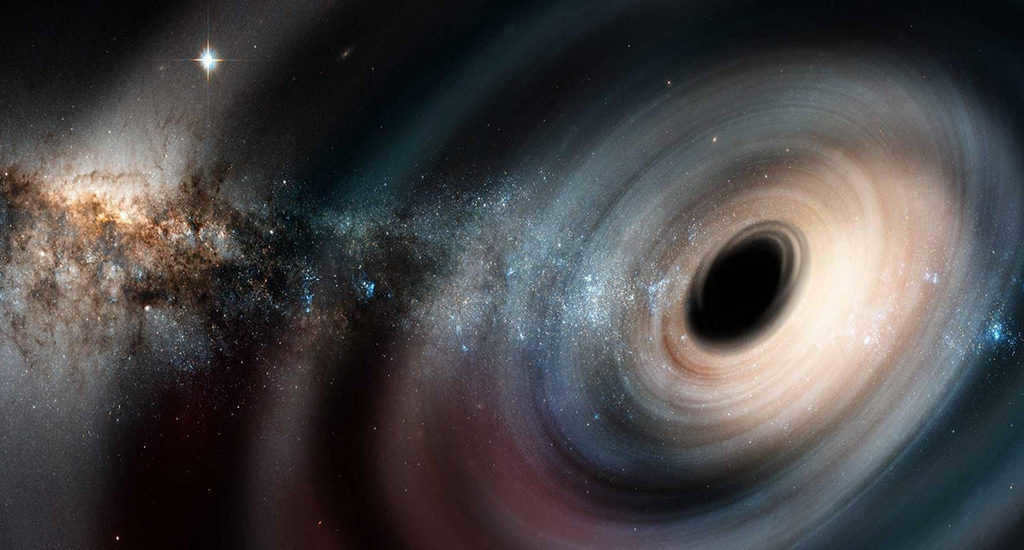
Scientists believe that the initial size of the Sagittarius A* object was smaller, but it grew larger by absorbing vast amounts of cosmic dust and gases. Additionally, this black hole has the ability to attract and consume any stars that come too close to it. In May 2019, astronomers from the University of California, Los Angeles, using the Keck Telescope, observed an unprecedented surge of activity in Sagittarius A*. Its brightness increased by 75 times. A similar event occurred with the star S0-2, which approached the black hole in 2018 and released a significant amount of gas into the surrounding region. This gas has finally reached the black hole, causing it to exhibit unusual behavior.
The Milky Way is encircled by a spherical halo
The primary constituents of our Galaxy include the disk, the spiral arms, and the core (nucleus). Additionally, a significant element is the halo, an imperceptible component with a spherical shape, consisting of scorching gas, extremely ancient faint stars, globular clusters, and mysterious dark matter. The halo encompasses the most “time-honored” entities in the Galaxy, enabling us to ascertain its age. By considering the age of the oldest stars, we estimate that the Milky Way came into existence approximately 13 billion years ago.
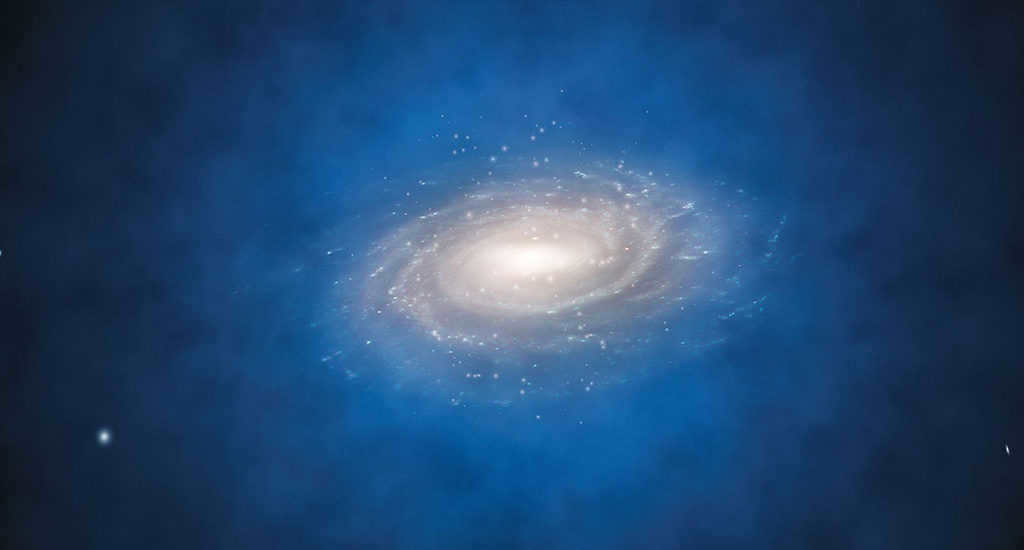
The age of the Milky Way is not much younger than that of the Universe itself. The most recent data suggests that the Universe is approximately 13.7 billion years old, while the oldest stars studied in the Galaxy are estimated to be around 13.2 billion years old.
Despite stretching for hundreds of thousands of light-years, the halo of the Milky Way only contains about 2% of the total mass of stars, with the majority of stars residing in the disk. The process of star formation in the halo is atypical, as it primarily occurs in the central parts of the arms within the disk region.
The formation of the Milky Way occurred shortly after the occurrence of the Big Bang, a timeframe that is considered relatively brief in cosmic terms, estimated at around 600 million years. As space expanded following the Big Bang (a process that continues to this day), it became filled with cosmic gas that gradually began to gather in concentrated clouds. Subsequently, nuclear fusion was initiated within these clouds as a result of high temperatures, leading to the birth of stars. These initial celestial bodies were drawn together by the force of gravity, resulting in the formation of clusters. The oldest of these clusters, known as globular clusters, can be observed within the halo of the Milky Way.
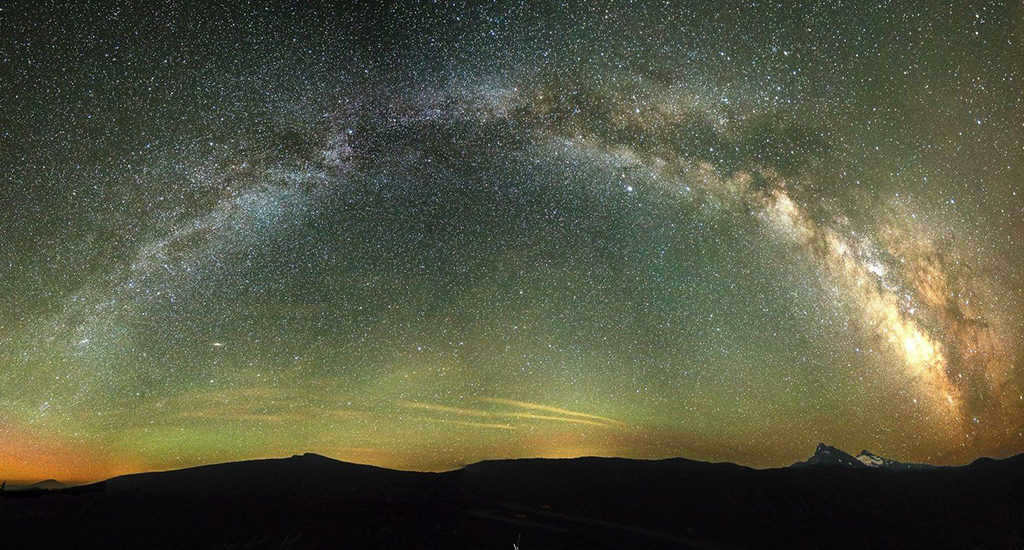

The Milky Way has enough material to create new stars, and this is currently happening. Recent data suggests that approximately 7 stars are formed each year in the arms of our galaxy. However, the expansion of the Milky Way is not solely due to the formation of new stars. Moving at a speed of 552 kilometers per second, our galaxy is also absorbing nearby intergalactic objects and even entire dwarf galaxies. According to one hypothesis, it is currently in the process of absorbing a nearby dwarf galaxy located in the constellation Canis Major.
Andromeda and the Milky Way will unite in 5 billion years
Together with the Large and Small Magellanic Clouds, the Milky Way and Andromeda form the Local Group of galaxies in the Virgo Superscope. The Large and Small Magellanic Clouds are satellites of our Galaxy. They are approximately one-tenth the size in diameter and possess a significantly smaller mass. Based on their trajectory, the Milky Way is projected to assimilate them in approximately 2.5 billion years.
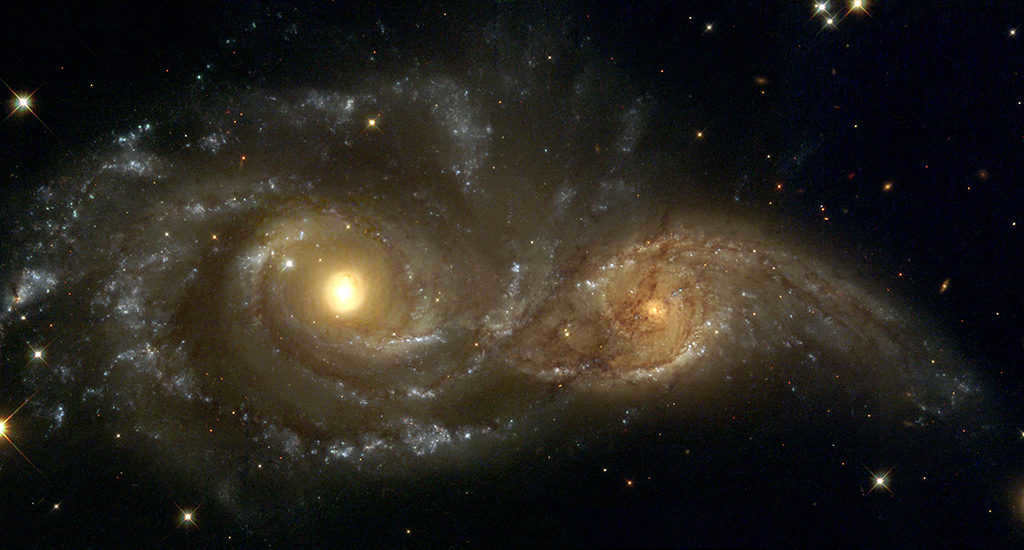
Meanwhile, the Milky Way is being approached by Andromeda at a speed of 120 km/s. If its speed and trajectory remain unchanged, the two galaxies will intersect in approximately 4-5 billion years. It is uncertain whether they will merge or if the galaxies will only have a tangential collision. Even if the velocity of Andromeda decreases, there will still be a collision, but it will not be between the disks themselves, rather it will involve the halo of dark matter.
The combination of Andromeda and the Milky Way is not expected to have any impact on the solar system and its planets. It is possible that the solar system could be expelled from the merged galaxy due to gravitational forces. If this occurs, the solar system would become a roaming intergalactic entity. Nevertheless, such a scenario would not result in catastrophic consequences for our planet. The activity of the Sun, which is projected to transform into a red giant in approximately 5-6 billion years, holds much greater significance for life on Earth.
The region in the galaxy where life could potentially exist is known as the Galactic zone of potential life. This area must possess specific characteristics that are essential for the emergence and survival of living organisms. In our galaxy, the Milky Way, this zone begins approximately 25,000 light-years away from the galactic center and spans a width of 6,000 light-years.
Our Sun is situated at this precise distance. It is located on the inner edge of the Orion arm, a smaller galactic arm also referred to as the Local Arm or Orion’s Spur. The Orion arm is positioned between two larger structures, namely the Perseus arm and the Sagittarius arm. These arms, along with the Swan arm and the Centauri arm, form the four primary spiral arms of the Milky Way.
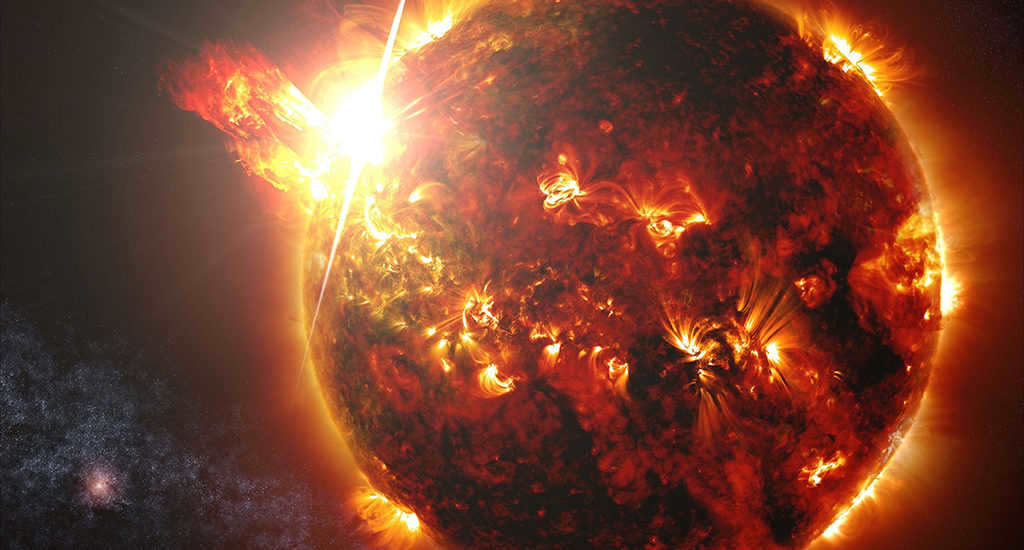
Milky Way star clusters
The Milky Way, like other galaxies in the universe, is a vast system composed of billions of stars, including our Sun. However, unlike other stellar systems, astronomers still lack a comprehensive understanding of its nature. A significant challenge in studying the Milky Way is the presence of a thick layer of interstellar dust, which hinders observations using optical telescopes. As a result, radio and infrared telescopes are necessary to determine its large-scale structure.
Based on available data, the majority of stars in the Milky Way are solitary luminaries, similar to our Sun. Following them are binary stars and clusters, each containing numerous bright celestial bodies. These star clusters vary in terms of age, size, and the number of stars within each cluster.

The mind-boggling number of stars in the Milky Way alone is truly astonishing
It should be noted that globular clusters, which are named for their rounded shape, are the largest and most massive star clusters. Astronomers have estimated that there are over 150 of these clusters in our Galaxy, although the exact number is still unknown. Furthermore, it is these clusters that form a spherical halo around the Milky Way.
One of the main characteristics of globular clusters is their age, which can be determined by comparing the stellar population of these clusters with models of stellar evolution. Hence, the age of the earliest stars in our Galaxy is estimated to be between 11 and 13 billion years. It is worth noting that globular clusters are exceptionally bright entities, with an average luminosity equivalent to approximately 25,000 Suns, and the most luminous clusters being at least 50 times brighter.
From an external standpoint, the Milky Way appears to be an immense, slender disk – this particular form is a result of its rotational movement. Without the force of gravity, each astronomical object within the galaxy would venture into the cosmos, exploring the immense expanse of the Universe. However, due to our limited perspective, the count of visible stars does not surpass 6000.
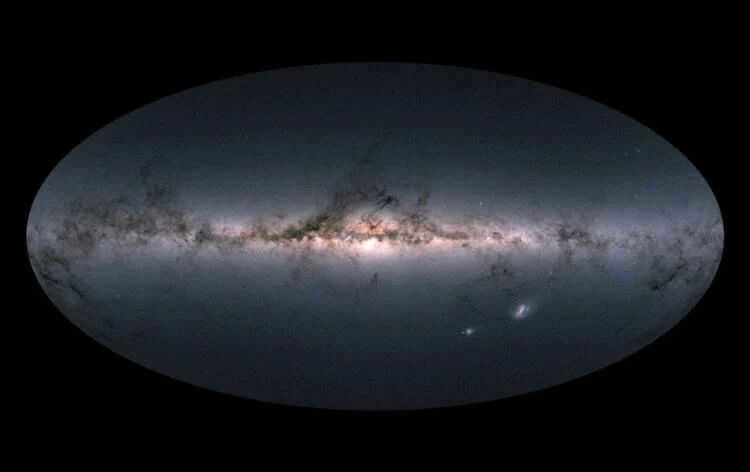
The size of the Milky Way is comparatively smaller than other galaxies, with the radius of its star disk and the radius of the Galaxy measuring 16 kiloparsecs.
At first glance, this may appear to be a substantial number, but in reality, these six thousand celestial objects represent only a small portion of our Galaxy. For every visible star, there are over 20 million invisible ones, and the majority of stars are either too dim, too distant, or obscured by cosmic dust clouds.
However, is it possible to determine the appearance of the Milky Way from an external perspective? Certain scientists argue that to achieve this, it is necessary to accurately determine the positions of the stars and subsequently plot them on a three-dimensional map.
One way to achieve this is by utilizing a well-known astronomical technique that was invented nearly 180 years ago. Known as “stellar parallax,” this method was developed in 1838 by Friedrich Bessel, a German astronomer, to determine the distance to a star in the constellation of the Swan.
The underlying principle of this approach is rather straightforward: begin by extending your index finger towards your face and covering one eye. Then, open that eye and close the other, while maintaining the distance between your finger and your face. The apparent shift in the finger’s position when viewed with the right and left eyes is dependent on its proximity to your face. Proficiency in trigonometry and access to a basic optical telescope are essential prerequisites. And just like that – the vast Universe unfolds before you (almost as if it’s within the palm of your hand).
Exploring the Unseen Regions of the Galaxy
Taking inspiration from the straightforward technique of stellar parallax, a team of scientists from the Max Planck Institute for Radio Astronomy and the Smithsonian Center for Astrophysics embarked on a quest to unveil the enigmatic face of the Milky Way that remains concealed from our view. In a study published in the esteemed journal Monthly Notices of the Royal Astronomical Society, astrophysicists successfully determined the distance to a cluster of stars situated on the far side of the Galaxy, an astonishing 66,000 light-years away from our planet. This groundbreaking achievement surpasses the previous record of 36,000 light-years, which was achieved in 2013.

It is not possible to observe the entire Milky Way galaxy from our planet Earth.
Using the Very Long Baseline Array (VLBA), an array of ten radio telescopes with extremely long baselines, astronomers were able to measure the distance to various celestial objects. The construction of this groundbreaking astronomical instrument commenced in 1986 and concluded in 1993, with a total project cost of $85 million dollars. The implementation of the VLBA enabled astronomers to detect stellar parallax, which is the apparent shift in the position of stars.
According to the authors of the new analysis report, the VLBA enables us to create a comprehensive map of the entire Galaxy. The estimated time required to accomplish this task is at least ten years.
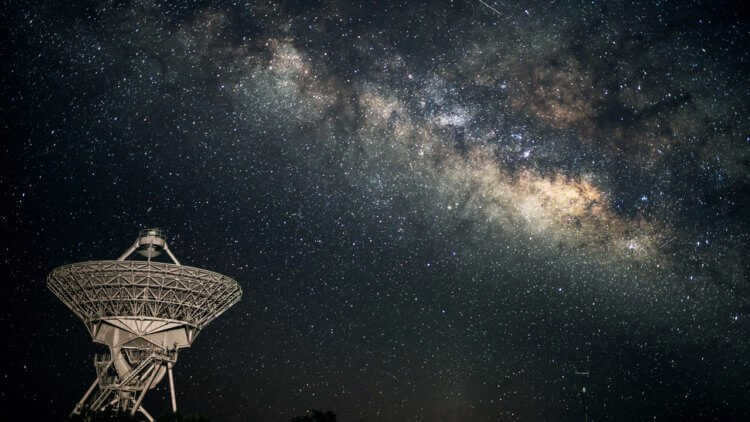
Thanks to advanced astronomical instruments, we have the ability to investigate the observable Universe.
While scientists are occupied with observing and gathering data, we are left to ponder the enigmatic luminaries and their clusters that lie beyond the reaches of the Milky Way. Meanwhile, as researchers delve into the hidden realms of our galaxy, their counterparts have already constructed a comprehensive map of deceased stars and their remnants. It goes without saying that this endeavor was incredibly challenging, as nothing in the vast expanse of the Universe remains stagnant.
These intricate astronomical models have resulted in the development of a chart depicting the celestial graveyard – the region where stars have both originated and perished. And as we anticipate the creation of the most precise stellar chart of the Milky Way, behold another awe-inspiring creation – a map showcasing the positions of black holes within the observable universe. Captivated? Well, you’ve come to the right place!

Among the countless number of galaxies in the observable Universe, our Milky Way is just one of them. With a diameter of approximately 100,000 light-years, it is relatively small compared to the vastness of the cosmos. The closest galaxy that resembles ours is located at a staggering distance of around 2.5 million light-years.

5-1. The closest spiral galaxy to us is the Andromeda Nebula, located 2.5 million light-years away (Adam Evans).


5-2. The Triangle Galaxy (3 million light-years away) is our second neighboring spiral galaxy. The image shows the largest nursery of stars in the Local Group of galaxies (Alexander Meleg and NASA).
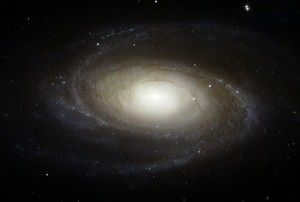
5-3. The Bode Galaxy (12 million light-years away) located in the constellation of Ursa Major is another neighboring galaxy to our Milky Way. According to some sources, it is said that “a highly experienced amateur astronomer, under exceptionally favorable conditions, may be able to observe this galaxy with the naked eye.” In this scenario, the Bode Galaxy could be considered the furthest object in the Universe that can be seen without the use of a telescope. (Image credit: NASA, ESA, N. Smith, U. California, Berkeley et al., and The Hubble Heritage Team – STScI/AURA).


5-4. The Cigar Galaxy can be found in close proximity to the Bode Galaxy and is potentially a companion galaxy. The presence of unusual polar emissions is a result of supernova explosions, which occur approximately once every ten years in this region (M. Mountain – STScI, P. Puxley – NSF, J. P. Puxley – NSF, M. Mountain – STScI, P. Puxley – NSF – NSF, J. Puxley – NSF – NSF, J. Puxley – NSF – NSF). Gallagher – U. Wisconsin).

Located 23 million light-years away in the constellation Canes Venatici, the Interacting Whirlpool galaxies are a captivating sight in the night sky. This stunning image, captured by S. Beckwith of the Space Telescope Science Institute and the Hubble Heritage Team, showcases the intricate dance of these two galaxies as they interact with one another. The gravitational forces between the galaxies have caused their spiral arms to stretch and distort, creating beautiful patterns of light and dark. This mesmerizing celestial display serves as a reminder of the vastness and beauty of our universe.
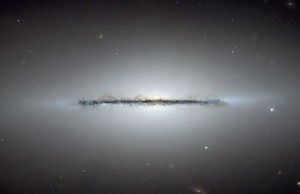

5-6. The Spindle Galaxy, located 44 million light-years away in the constellation Dragon, is facing us with a side view, allowing us to observe the dark regions of cosmic dust in the galactic plane. Interestingly, one of the galaxies visible from this viewpoint is our very own Milky Way (NASA, ESA, Hubble Heritage Team STScI / AURA).
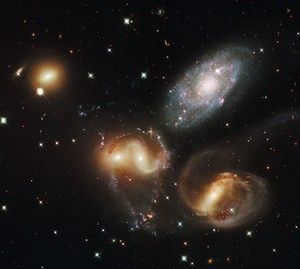

5-7. The interacting galaxies in the Stefan Quintet (located 300 million light-years away) can be found in the constellation Pegasus. One of the galaxies (found at the top right) is much closer, approximately 40 million light-years away, and is not participating in the interaction (source: NASA, ESA and the Hubble SM4 ERO Team).


5-8. The Tadpole Galaxy (located 420 million light-years away) can be found in the constellation Draco. This space tadpole acquired its tail as a result of a collision with a neighboring galaxy (ACS Science & Engineering Team, NASA).
All the celestial bodies we observe in the expanse of the heavens are actually stars within our own Milky Way galaxy. One might take notice of the faint, diffuse streak of the Milky Way that extends across the entirety of the sky. This ethereal band is comprised of an immense multitude of stars, collectively constituting our galaxy, which boasts a staggering count of approximately 400 billion stars. In addition to these luminous orbs, the Milky Way also encompasses vast quantities of gas, dust, and, significantly, dark matter, the primary contributor to the galaxy’s overall mass. The dimensions of our galaxy are sufficiently colossal to accommodate the vast multitude of hundreds of billions of stars, with the distances between them measured in units of light-years. The scale of the Milky Way spans around 100,000 light-years, signifying that it would require a period of approximately 100,000 years for light to traverse from one extremity of the galaxy to the opposite end.
Because we are unable to observe our Galaxy from an external viewpoint, there remains a great deal that is unknown about it. One example of this is our lack of knowledge regarding the number of spiral arms present in the galaxy. However, we do possess information indicating that our Galaxy bears resemblance to certain other spiral galaxies, notably our close neighbor, the Andromeda Nebula galaxy. Interestingly, the bright spiral arms contain a comparable number of stars to the dark space that lies between them. The disparity lies in the fact that the arms are home to actively forming young bright stars, which are easily visible, while the faint stars residing in the spaces between the arms remain unseen.
There are various classifications for galaxies, but they can generally be divided into three main groups. Firstly, there are disk galaxies which resemble our own Milky Way. These galaxies often feature stunning spiral arms that are a favorite subject for photographers. Secondly, there are elliptical galaxies which can appear as flattened spheres of stars. Lastly, there are irregular galaxies which lack a distinct shape. This irregularity is typically caused by the galaxy’s low mass, preventing its stars from aligning in a specific order. Alternatively, an irregular galaxy may have recently interacted with another galaxy of similar mass, resulting in significant distortion. Galaxies are organized into clusters and, on a larger scale, superclusters.
This article is taken from a wall newspaper created by the charity initiative “Short and concise about the most fascinating things”. Tap on the newspaper preview image below and explore the remaining pieces covering topics that pique your curiosity. Thank you!

We have received the material for this edition from Sergey Borisovich Popov, an astrophysicist and a distinguished scientist. He holds a Doctorate in Physical and Mathematical Sciences and is a Professor at the Russian Academy of Sciences. Sergey Borisovich Popov is also a leading researcher at the Sternberg State Astronomical Institute of Moscow State University and has received numerous prestigious awards for his contributions to the field of science and education. We believe that this issue will be beneficial for students, parents, and teachers, especially now that astronomy has been included as a mandatory subject in schools once again (as per Order No. 506 of the Ministry of Education and Science dated June 7, 2017).
August 17th
Zero
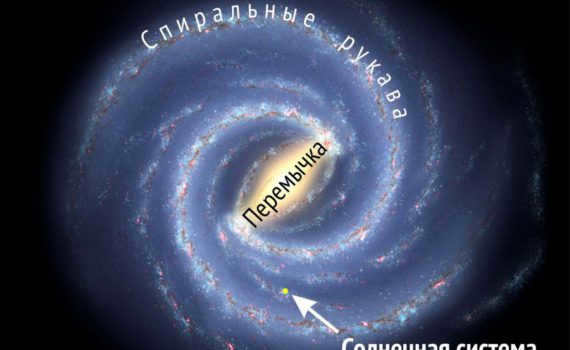

Johannes Hartmann, a German astronomer, was the first to provide evidence that interstellar space is not devoid of matter.
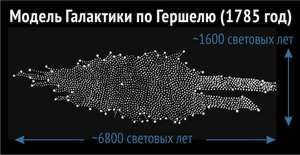

William Herschel’s visualization of our galaxy. The Sun is denoted by a star slightly to the left of the center. The appearance of the “Crocodile’s Mouth” is due to a dark gas-dust cloud in the Sagittarius constellation that obscures the stars from our view (daisy.astro.umass.edu with modifications).

The representation of our Galaxy is depicted by Jacobus Kapteyn, a Dutch astronomer. The illustration displays the center of the Galaxy along with the location of the Sun (astronomy.ohio-state.edu).


A computer model depicting our Milky Way galaxy. This spiral galaxy features a junction and measures approximately 100,000 light-years in diameter and has an average thickness of around 1,000 light-years. It is estimated to contain about 300 billion stars, according to nasa.gov with revisions.
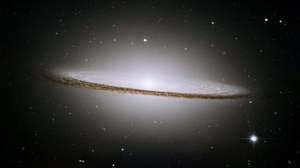

The astronomers have given the name “Sombrero” to the galaxy M104 due to its distinctive shape. A prominent strip of dark dusty matter is clearly visible (NASA/ESA and The Hubble Heritage Team (STScI/AURA).

Stars gazing through a cluster of dark interstellar dust in the Sagittarius constellation (Hubble Heritage Team, AURA/ STScI / NASA)
This section is taken from a wall newspaper created by the charitable initiative “Short and Clear About the Most Fascinating Things”. Simply click on the thumbnail of the newspaper below to access the remaining articles on subjects that pique your curiosity. We appreciate your support!

The content of this edition has been generously provided by Sergey Popov, an astrophysicist who holds a Doctorate in Physical and Mathematical Sciences. He is also a Professor at the Russian Academy of Sciences and a leading researcher at the Sternberg State Astronomical Institute of Moscow State University. Sergey Popov has received numerous prestigious awards in the field of science and education. We believe that this edition will be of great value to students, parents, and teachers, especially now that astronomy has been reinstated as a mandatory subject in schools (as per Order No. 506 issued by the Ministry of Education and Science on June 7, 2017).
Our charity project “Short and clear about the most interesting things” has a collection of wall newspapers available for you to explore on the k-ya.rf website. Additionally, we have a dedicated group on vkontakte and a discussion thread on the Peter Littwan Parents website, where we engage in conversations about the latest newspaper releases. We are pleased to offer our newspapers free of charge at various distribution points in St. Petersburg.
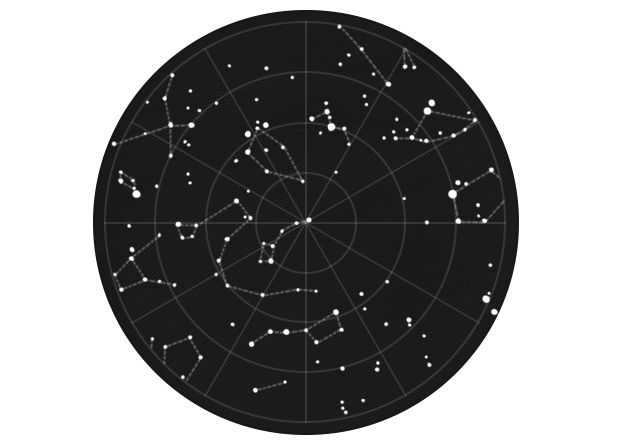
Prior to the invention of GPS and even the compass, individuals relied on navigating by the stars as the primary method to determine direction on land or at sea. Despite the advancements in technology that have made it easier for people to find their way, it is still enjoyable to acquire the skill of navigating by the stars. By familiarizing yourself with a few stars and constellations, you can effectively identify the cardinal directions of north, south, east, and west, or simply select a star and track its movement.
The primary celestial feature in the nocturnal expanse is Polaris. It stands apart from the others as it remains stationary, while the remaining stars and constellations shift their positions in the sky.
Polaris consistently directs towards the north, with a minute deviation of just one and a half degrees throughout the night. This attribute is crucial for precise navigation, although it may hold less significance for a disoriented tourist.

To locate Polaris, the first step is to locate the two most well-known constellations in the night sky – the Big Dipper and the Little Dipper. In the Big Dipper, we need to identify the two rightmost stars that form the “wall” of the dipper’s bucket. By drawing a straight line from the upper star, which is equivalent to four distances from the two “extreme” stars of the Big Dipper, we can find Polaris. It is nestled in the handle of the bucket in the Little Dipper.

Undoubtedly, it would be more convenient to locate the Little Bear right away, but, as experience has shown, the Big Dipper is immediately noticeable, whereas the Little Dipper is sometimes not very easily visible.
If the Big Dipper is obscured by clouds or if dense vegetation obstructs your view, Polaris can be found by using the Cassiopeia constellation. This constellation, which stands out clearly against the backdrop of the Milky Way, resembles the letter “M” or “W,” depending on your preference. Polaris is situated in a straight line to the left of the central star of Cassiopeia.
So, once we have located Polaris, determining the cardinal directions becomes a matter of technique: when you look directly at the star, you will see east on your right side, west on your left, and south behind you.
Southern Hemisphere
In the Southern Hemisphere, Polaris cannot be seen, so the navigational guide here is the Southern Cross, which points towards the south. The Southern Cross consists of four bright stars arranged in the shape of a cross. It is important to distinguish it from the False Cross, which is located to the right and has stars that are dimmer and spaced farther apart. Additionally, to the left of the Southern Cross, there are two guiding stars.
The direction towards the south is determined by drawing an imaginary line through the vertical axis of the Southern Cross. The same guiding stars are used here. We mentally connect these stars with a line and draw a perpendicular line from the center of this line. The point where the lines intersect, coming from the Southern Cross and the guiding stars, indicates the location of the South Pole.

Arrangement of constellations
If you possess a thorough comprehension of the constellations, determining the cardinal directions on a cloudless night will not pose a challenge. The constellations alter their positions in the celestial dome not only throughout the course of a night, but also over the span of a year. Recollect that the subsequent constellations are visible in the southern sky at midnight: Canis Major and Canis Minor in January, Leo in March, Volopassus in May, Taurus in November, and Orion in December. Additionally, the Milky Way roughly extends from the south to the north, although these directions are only an approximation and, hence, utilizing the Milky Way as a point of reference should be considered merely an additional precautionary measure.
Basic stargazing technique
To utilize this approach, a small amount of preparation is necessary. The first step is to bury two sticks of differing lengths into the ground. By observing the movement of any star, with the exception of Polaris, in relation to these sticks, it becomes relatively simple to determine the direction in which you are facing.
If the star ascends, you are facing east. If it descends, you are facing west. If the star moves in a clockwise motion, you are facing north, and if it moves counterclockwise, you are facing south.
Keep in mind that this technique provides only approximate directions and should be used solely in the most dire circumstances.
Orientation using the Milky Way.
Because the Milky Way always extends from north to south, it is simple to determine the directions of the world based on it during clear weather (with an error margin of only 10%).
The Milky Way, pronounced “Milky Way” like in the commercials, is our home galaxy that encompasses our solar system and all the stars visible to the naked eye. It is composed of a vast number of stars within our galaxy and appears as a band of silvery color. We observe this celestial pathway along the galactic disk. Therefore, when we divert our gaze from the disk (from the Milky Way), we are not looking at the center of the galaxy, but rather towards the periphery and the side.
And here is an interesting piece of information about scarab beetles. Did you know that scarab beetles called Scarabaeus satyrus can actually navigate using the Milky Way? Biologists have discovered that these beetles are able to move in the correct direction even when the Sun and Moon are not visible, thanks to their ability to orient themselves based on the light coming from the Milky Way.
This fascinating discovery was actually made by accident during a study on how insects perceive polarized light from the moon. Scientists observed how the beetles were able to maintain a straight path while rolling a dung ball.
During one night, the researchers came across a fascinating discovery – scarabs possess the remarkable ability to navigate their surroundings even in the absence of moonlight. It seems that these creatures rely on their eyes to achieve this feat. When the scientists obstructed the starlight by placing cardboard over the insects’ eyes, they observed that the scarabs began to wander in circles.
Subsequent experiments conducted in a planetarium confirmed the researchers’ field observations. The beetles demonstrated a strong sense of direction when presented with a projection of the night sky on the dome. However, when the section representing the Milky Way was removed, leaving only the bright stars, the scarabs lost their ability to move in a straight line.
Up until this point, it was commonly known that many animals such as bees and grasshoppers rely on the Sun, Moon, and even the polarization of sky light for orientation. However, this discovery marks the first time that insects’ ability to navigate by the stars has been documented.






